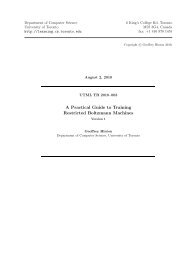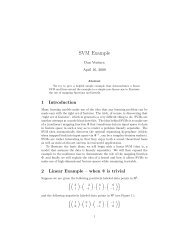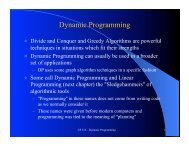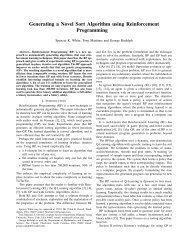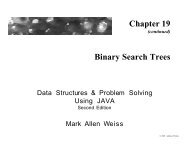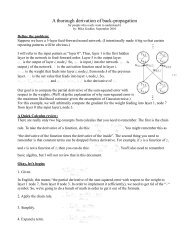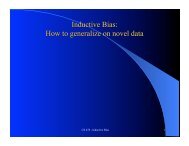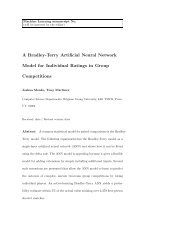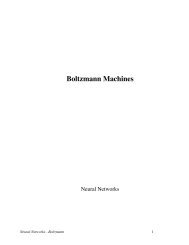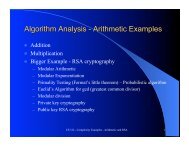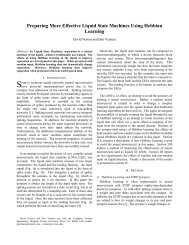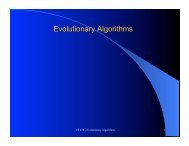A Collaboration with DARCI - Neural Network and Machine ...
A Collaboration with DARCI - Neural Network and Machine ...
A Collaboration with DARCI - Neural Network and Machine ...
You also want an ePaper? Increase the reach of your titles
YUMPU automatically turns print PDFs into web optimized ePapers that Google loves.
Introduction<strong>DARCI</strong> (Digitial ARtist Communicating Intention) is a computersystem designed to eventually produce original <strong>and</strong>meaningful images [4, 5]. Inspired by Csíkszentmihályi’s systemsmodel of creativity [1], <strong>DARCI</strong> is designed to functionin a social environment. She begins by learning how to associatelanguage <strong>with</strong> images through online training by humanteachers. Currently, <strong>DARCI</strong> can only associate adjectives <strong>with</strong>low-level features extracted from image, but in the future,she may be able to associate much more. This underst<strong>and</strong>ingof language provides the basis for <strong>DARCI</strong> to produce originalimages herself. Currently, when provided <strong>with</strong> a source image<strong>and</strong> list of adjectives, <strong>DARCI</strong> can render the source tomatch the adjectives in an original way. Eventually, she willbe able to produce entirely original images <strong>and</strong> communicatethe intention of her artifacts through the language she is developing.She will use the social <strong>and</strong> environmental contextof each moment, as informed by data obtained from the internet,as well as her training to make decisions regardingthe creation of her artifacts.<strong>DARCI</strong> is partially dependent upon her interaction <strong>with</strong> humanteachers in order to learn meaning. At <strong>DARCI</strong>’s website(http://darci.cs.byu.edu) volunteers can view r<strong>and</strong>omimages <strong>and</strong> describe them for <strong>DARCI</strong>. Additionally, <strong>DARCI</strong>will describe images herself <strong>and</strong> volunteers can correct anymistakes they feel she has made. This is very similar to astudent-teacher interaction among humans. With a series ofneural networks trained <strong>with</strong> this human labeled data, <strong>DARCI</strong>learns to associate descriptions <strong>with</strong> combinations of imagefeatures present in the images. She is then able to generalizethis knowledge to images that she has never seenbefore. Currently, <strong>DARCI</strong>’s descriptions include only lists ofadjectives; but in the future, these descriptions could be exp<strong>and</strong>edto natural speech. <strong>DARCI</strong> can also assign quantitativevalues to the image-adjective associations. For example, shecan indicate how “abstract” an image is. In this way, <strong>DARCI</strong>can analyze <strong>and</strong> evaluate any images she is presented <strong>with</strong>,including her own attempts at art. Figure 1 shows a briefoutline of the system.Figure 1: Overview of <strong>DARCI</strong>’s artifact creation process.Sociological ExperimentsSince <strong>DARCI</strong>’s concept of meaning is shaped by those whotrain her, what she produces <strong>and</strong> how she judges art is directlyimpacted by her environment. This yields the possibilityfor an interesting study analyzing different social groups.One group of individuals may perceive a particular imagefeature in a different light than another group. For example,what may be funny to one group is sacred to another.If different versions of <strong>DARCI</strong> were trained by distinct socialgroups, what would be the differences in her judgment <strong>and</strong>the artifacts she produces? In a sense, <strong>DARCI</strong> would act as afilter for the different social groups, providing a new lens toqualify social variances.




